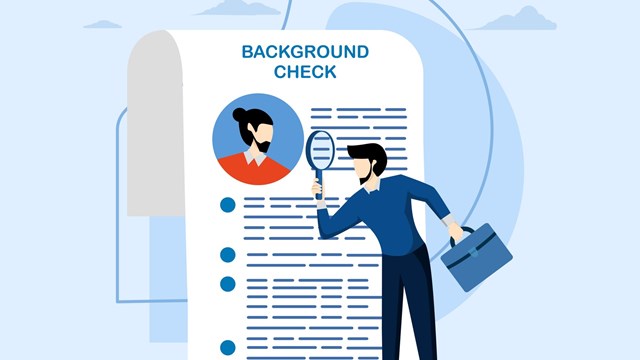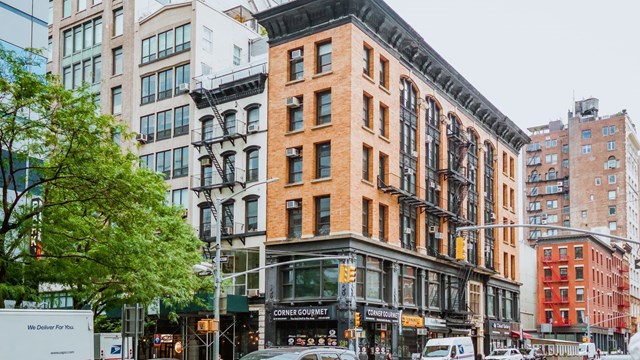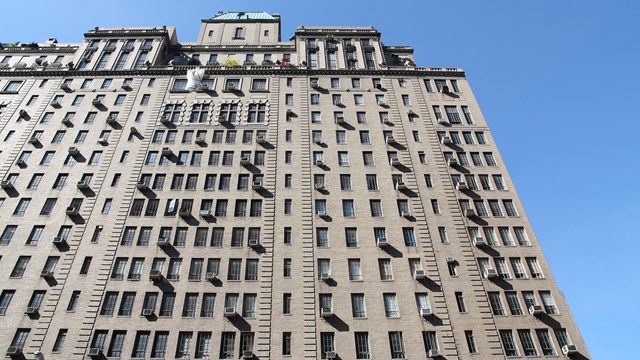Rare in all but a few cities around the country, residential co-ops are by far the most prevalent type of owner-occupied apartment in New York City, outnumbering condos by 3-1 by some estimates.
According to a study commissioned by NYU’s Furman Center for Real Estate and Urban Policy in 2006, “Only one other city, Washington, D.C., has an unusually large proportion of cooperative housing, and this share (24.2 percent) does not come close to matching that of New York City.”
A Brief History of Co-ops
According to “A History of Housing Cooperatives” in the National Cooperative Law Center Journal, the housing co-op movement was born in 19th century Europe— primarily in Great Britain and France—as an affordable alternative to rental tenement flats. When they sprouted in New York City, where the first co-ops in the U.S. were established, they were formed for an entirely different clientele.
One of the first co-ops in New York City, The Randolph, built in 1876 on West 18th Street in Manhattan, was “designed to provide people in high income brackets with the advantages and economies of individual home ownership without all the responsibilities,” wrote attorney Richard Siegler, of counsel, with the law firm Stroock & Stroock & Lavan, LLP, quoted in the Furman Center report.
Another notable co-op, the Rembrandt, built in 1881 at 152 West 57th Street, was designed for “people of means and good social standing” according to its developers, quoted by architectural historian Christopher Gray in the New York Times. Several co-ops were built on the Rembrandt model in the early 1980s, but some more egalitarian cooperatives were formed a bit later.
In 1916, the Finnish Home Building Association built the first nonprofit, “limited equity,” housing cooperative, Alku (Finnish for “beginning”), in Sunset Park, Brooklyn, where a wave of immigrants from Finland made their home.
Owned and run by the residents, its apartments could not be sold for a profit (much like in the Mitchell Lama co-ops built in the city starting in the 1970s, 170 of which are still in operation today). Alku II followed soon after, and by the late 1920s, Sunset Park, Brooklyn’s “Finntown,” was home to over 25 housing cooperatives and roughly 10,000 Finns.
The Roaring ‘20s
Co-ops had a strong resurgence in the 1920s, following WWI. Several were created for the city’s middle and low income population, assisted by tax incentives provided by the New York Housing Act of 1927. The Amalgamated Clothing Workers of America (ACWA) labor union commissioned developer Abraham Kazan, often called “the father of cooperative housing,” to build thousands of units, primarily for its members. Later, as head of the United Housing Foundation, Kazan developed over 35,000 affordable units in such projects as the mammoth Co-op City in the Bronx.
The next greatest era of co-op development came in the 1980s, when owners of large rental buildings built between the 1920s and 1950s converted their properties to cooperatives en masse, establishing most of the co-op buildings that exist throughout New York City today.
How Co-ops Work
The legal entity that is the cooperative apartment is more complex than the condominium, and understandably confusing to many.
According to attorney Robert Braverman, a principal with the Manhattan law firm of Braverman | Greenspun PC in Manhattan, “The most important thing to understand about owning in a co-op as opposed to a condominium is that in a co-op, you don't have any interest in the property. You buy stock in a corporation—a ‘single asset corporation’—and the ownership of that stock entitles you to a lease for one of the units in the building.”
At a co-op closing, instead of a deed with your name on it (as with a condominium), you take possession of shares of stock in a corporation entitling you to lease a particular piece of square footage, a.k.a., your apartment.
The Foundations of the Co-op
The two documents underpinning the governing of a co-op are the bylaws and the proprietary lease, both of which are written at the inception of the corporation by the sponsor, the building owner or developer who puts the deal together.
According to Manhattan-based real estate attorney Helene Hartig, “The bylaws lay out how the building is governed—how many directors there are, when the building has its shareholder meetings, when the board of directors meets, and who the officers are for the building.”
Other items covered in the bylaws are how and when budgets are prepared, which decisions are to be made by the board and which need shareholder approval, and procedures for electing the board, as well as removing board members.
The rules for changing the bylaws are set within the bylaws itself. Amending the bylaws typically requires a super-majority of two-thirds or more of the shareholders, which prevents the board from too easily making decisions that affect the community’s finances and control over shareholders’ rights.
The Proprietary Lease
The proprietary lease defines the relationship between the shareholder and the corporation and its board members, delineating the shareholder’s rights and responsibilities as distinguished from those of the building’s.
“For example,” says Hartig, “a typical proprietary lease says anything in the walls, the structural systems, are the building's responsibility, and anything inside the walls of the apartment itself—the toilet, for example—is the responsibility of shareholder.” The building must fix a leak in the wall, but not a leaky faucet, she notes.
The proprietary lease commonly covers the right of the board to make decisions about subletting and quality of life issues, establish and modify house rules, gain access to apartment units for building repairs and establish and collect maintenance and assessments. As with the bylaws, any change to the proprietary lease requires the vote of a super-majority of shareholders.
Words to Live By
A third set of rules of the co-op, subordinate to the bylaws and the propriety lease, house rules govern conduct within the community, regulating such issues as noise, bikes in the common areas, pets, move-in/move-out fees and times, ornaments in the hallway and restrictions, for example, on use of a terrace or balcony.
House rules can be established and amended by a simple majority of board members, so they can be adjusted to address issues as they take on importance to shareholders in the building and to reflect changes in the marketplace. But boards should use extreme caution in tampering with the house rules. Issues like smoking in apartments or guest policy can lead to raging debates. Plus, Braverman warns, “Boards that get a little too aggressive don't get reelected.”
Financing the Corporation
One reason co-ops are considerably less expensive than condos, and why they generally have higher monthly fees, is the type of mortgage financing the building carries. In a condo there is no mortgage on the property. Co-ops usually take an underlying mortgage on the building when they are incorporated, and boards often refinance that mortgage over the years.
“The building might start with a $1 million mortgage when it is converted and then refinance when they need capital improvements, bringing it up to $2 million or more,” according to Mindy Goldstein, senior vice president of lender National Cooperative Bank (NCB).
As a co-owner of the corporation, the shareholder pays a portion of the payments on the mortgage as part of their monthly maintenance. The good news is that their portion is tax deductible. More good news is that the ability to obtain financing for special projects in the building helps keep special assessments down.
When considering making a loan to a cooperative building, says Goldstein, “We look at the financial history of the building, their reserves, their arrears, how many units are owner-occupied and how many still have the sponsor present.”
Because defaults are extremely rare on underlying co-op mortgages, “Everyone wants to underwrite an underlying mortgage on a cooperative,” reports Shawn Carson, a mortgage banker with Quontic Bank in Astoria, Queens.
The Right to Refuse
One aspect of the operation of a co-op that is vastly different from a condo is the right of board to refuse buyers. Condos cannot reject potential buyers, although they have the right of first refusal, which means that if the board doesn't wish to sell to a particular buyer, they can offer to buy the apartment for the same terms. Co-op boards can reject buyers for any cause without having to give a reason, except in violation of anti-discrimination laws, which prohibit rejection on the basis of race, religion, marital status and a few other criteria.
When they were first established in New York, cooperatives were infamous for their prejudice and exclusivity. “Formed in the late 1800s and early 1900s, many of Manhattan’s grandest East Side co-ops were explicitly designed to house the old-money establishment while excluding newcomers and non-WASPs,” wrote Candace Taylor in The Real Deal.“Jews, in particular, found they were not welcome at many of the top-flight buildings.”
Today, with the proliferation of middle and low-income co-ops, “I don't think it would be a fair characterization to say they are only for rich people,” insists Braverman.
Still, many potential buyers are shocked at the level of scrutiny co-op approval entails. According to Rachel Yohannes, an associate broker with Manhattan-based Oxford Property Group, “They ask you where you went to school, what are your interests, everything about your finances, your job, where you’ve worked, where you live—too much personal information. People get very upset by that.”
Barriers to Eviction
One possible reason for the keen scrutiny trained on prospective co-op buyers is that once a buyer is admitted to the building, it’s difficult to get them out. To evict a shareholder, the corporation must take ownership of their stock and proprietary lease. And if the owner is still in the apartment it needs to appeal to the special co-op section of landlord-tenant court to dispossess the former shareholder.
Then, explains Hartig, “If a shareholder lawyers up and starts challenging late fees, or finds some sort of procedural problem with how they were served or finds a legal technicality or some sort of grammatical error,” the corporation will find itself deep in the “horror show of landlord-tenant court.”
Fortunately, it rarely comes to that. “Evictions in today's market are not common because you've got a lot of safeguards,” says Hartig. For one thing, it stands to reason that a shareholder would sooner sell their apartment than relinquish it, especially in a good market.
Co-ops can work out payment plans with those who may have fallen on hard times. Plus, the recognition agreement that accompanies a shareholder’s mortgage obliges the co-op to report late maintenance payments to the bank, which would likely step in to make payments on behalf of the shareholder before allowing the co-op to foreclose.
Condos Seize the Day
Today, almost all new residential developments in the city are condos. “They're not making co-ops anymore,” says Braverman, to which he attributes “the flexibility of the condominium form of ownership.” But neither are co-ops rushing to convert to condos.
Not that it doesn't happen—but the process is a formidable one. First, to even get the idea off the ground, you need a super-majority of the shareholders. Some bylaws put thresholds for dissolution of the cooperative as high as 80 percent. Then, explains Hartig, “You have to pay off the building’s underlying mortgage, redo your offering plan, and get permission from the attorney general. It changes your whole structure, your whole voting mechanism.”
The better route for co-ops desirous of the more freewheeling condo lifestyle is to simply loosen up the house rules, suggests Braverman. “If the board decides they want to relax their subletting rights, all they have to do is say, ‘Okay, we will start to approve sublets.’ ”
But most residents of co-ops appreciate having control over the tenor of life in their community. Indeed, the Furman Center study concluded that a major reason for the greater preponderance of co-ops over condominiums in New York is the social exclusivity it offers. (And because they got a head start. Condominiums did not appear in the city until the 1960s.)
“Sometimes co-ops get a bad rap because of their restrictive nature,” says Braverman, “and you hear all of those crazy stories about boards. But hundreds of thousands of people live in co-ops and most of them are very happy where they live.”
Steven Cutler is a freelance writer and a frequent contributor to The Cooperator.










Leave a Comment